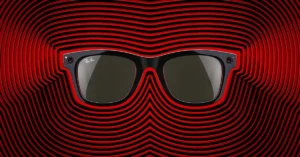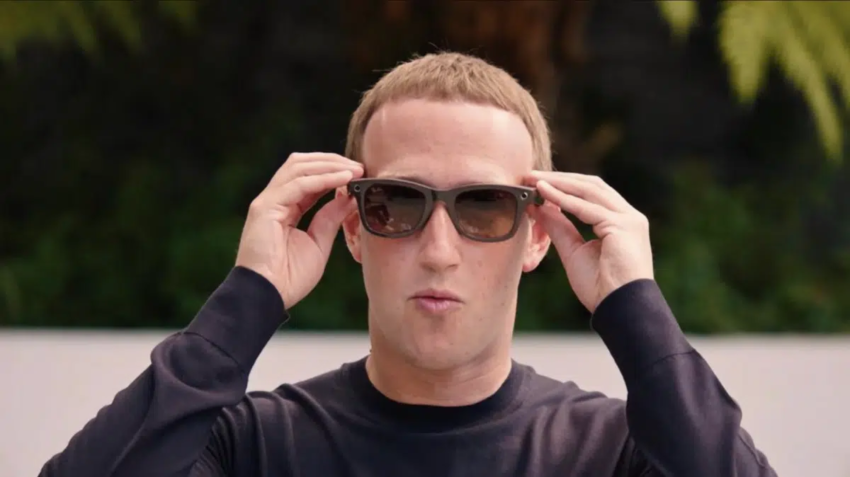Smart glasses, which were once thought to be the stuff of science fiction, are quickly becoming the newest and most revolutionary wearable technology. Smart glasses have come a long way from their first prototypes to the complex gadgets we use today.Many companies have recently joined the smart glasses industry and introduced models with impressive features. Huawei unveiled the Eyewear 2 series and Meta unveiled its second-generation Ray-Ban smart glasses; both provide remarkable features and specs.
Let’s examine how smart glasses have changed over time and the factors that have fueled these developments.

New Smart Glasses are better in Style and Comfort
Although revolutionary, the first generation of smart glasses was not always visually appealing. Wearers of early designs, like as Google Glass, stood out in a crowd due to their obvious technological components—but not necessarily in a good manner. These big, somewhat uncomfortable shapes were not at all popular; they frequently looked more like lab equipment than stylish eyewear.
Nonetheless, the design of smart glasses has seen a dramatic change in the last several years. Businesses now understand how crucial it is to combine fashion and utility in order for wearables to become widely accepted. Contemporary smart glasses have more understated, streamlined forms that mimic conventional eyeglasses.

For instance, Ray-Ban and Meta (previously Facebook) collaborated to develop smart spectacles that elegantly combine cutting-edge technology with the iconic Ray-Ban design. These glasses appear like fashionable sunglasses and have the ability to take pictures, record movies, and even take phone calls.
With its Huawei Eyewear 2, Huawei has also made a foray into the smart glasses industry. Its ergonomic design features no discernible tech components and combines a minimalist look with speakers and microphones that are perfectly incorporated into the frame.

Renowned for its audio gear, Bose shocked a lot of people with Bose Frames—subtle, stylish frames that work well in a business conference or fashionable cafe—that combine audio functions.
Brings New Features & Integration
As technology develops, smart glasses can do more than just reflect notifications from smartphones. These days, they want to offer distinctive, hands-free experiences that may rival or even surpass those of other gadgets.
Travel and Navigation: In-sight navigation instructions are available in modern smart glasses like North Focals, saving users from continuously checking their devices. Some even offer digital indicators in the actual world that serve as augmented reality guidance.
Communication: Immersion first-person moment capturing and sharing is made possible by smart eyewear like Snap’s Spectacles. For hands-free calls and voice instructions, several versions include microphones and speakers integrated right into the device.
Entertainment & Media: Bose Frames, for instance, feature directional speakers to allow consumers to enjoy music without headphones. Rich media experiences may be had using glasses like Nreal Light, which overlay games or films over the user’s surroundings. The Rayban Smart Glasses from Meta allow for live broadcasting.

Real-time translation of foreign menus and signs is made possible by integrating Google’s augmented reality technology with smart glasses. This is a useful tool for tourists.
Health & Fitness: During physical activities like jogging or cycling, Vuzix Blade smart glasses show fitness data and provide real-time updates on speed, heart rate, and distance traveled.
Integration with Home devices: By establishing a voice command connection with services like Amazon Alexa or Google Assistant, smart glasses may be used to manage smart home devices, such as security cameras, lighting, and thermostats.
Professional and Educational: Smart glasses that superimpose instructional movies or essential data are beneficial for occupations like medicine that require hands-free information access. Applications exist for Epson’s Moverio series, for example, at medical schools and museums.
The possibilities of smart glasses are further expanded by the increasing number of apps and software available for them. The lines between smartphone capabilities and smart glasses experiences are expected to blur as developers get more used to both platforms, possibly providing a comparable or even better digital experience.
Adds New Augmented Reality (AR) Experiences
The integration of Artificial Intelligence (AI) and Augmented Reality (AR) in smart glasses is transforming our understanding of and interactions with our surroundings. Artificial intelligence (AI) improves contextual awareness, allowing smart glasses to identify their environment and display pertinent information.

Obstacle alerts, real-time transcription for the hard of hearing, and tailored suggestions are all included in this. In terms of artificial intelligence (AI), Meta’s latest Ray-Ban Meta smart glasses come with Meta AI, which opens up capabilities like voice commands for hands-free operation, the ability to take and record photos and videos, and the possibility of real-time information display.
Longer Battery Life and Better Power Efficiency
The advancement of battery technology in smart glasses has resulted in notable enhancements to both power efficiency and battery longevity. Notable developments include:
Battery Technology: The energy density of lithium-polymer and lithium-ion batteries has improved, enabling them to store more power without growing in volume.
Optimized Chipsets: Qualcomm’s Snapdragon XR1 and Snapdragon AR1 Platform are examples of wearable-specific microprocessors that offer great performance with low power consumption.

Software Optimization: Modern smart glasses have battery-draining background activities reduced by resource-efficient operating systems and apps.
Solar Integration: Some smart glasses include solar cells built into the frames to generate extra power during the day from ambient light.
Fast Charging: With the backing of several fast-charging technologies, users of contemporary smart glasses may swiftly recharge and experience prolonged usage after just a short while of charging.
Thanks to these developments, companies like Bose, Ray-Ban (in collaboration with Meta), and Huawei are able to create smart glasses that have remarkable battery life. For instance, newer Ray-Bans include fast charging capabilities and an all-day battery life. Users may anticipate high-performing, energy-efficient smart glasses that don’t sacrifice functionality as technology advances.
Better Data Privacy and Security Measures

Data security and privacy have emerged as major problems with the integration of cameras and recording devices into smart eyewear. Prioritizing customer privacy, brands are aggressively putting robust security measures like encryption, user authentication, and stringent data-sharing policies into place to guard against unwanted access and any data breaches.
Increased Affordability and Market Accessibility
Previously only available to computer enthusiasts, smart glasses are becoming more widely available. Technological breakthroughs, heightened competitiveness, and economies of scale are the driving forces behind this change. Larger production volumes reduce manufacturing costs, and competitive pricing is being pushed by an increasing number of new businesses joining the market. Cost reduction is aided by advancements in materials, display technology, and component manufacturing. These days, smart glasses may be purchased via a number of outlets, such as internet retailers and optical stores. All things considered, smart glasses are about to become widely available and reasonably priced.
Conclusion
Thanks to constant advancements and improvements in technology, smart glasses are still making steady progress. Over time, the incorporation of intelligent elements is enhancing their functionality. In addition, the advent of augmented reality devices is improving the ecosystem as a whole by offering additional software support.
The development of AR/VR headsets lays the groundwork for smart glasses to continue to advance. The increasing number of users and the developing use of Augmented Reality point to a slow transition in the direction of smart glasses adoption in the future. With significant progress already made in the direction of an inventive and bright future, the future seems bright.
